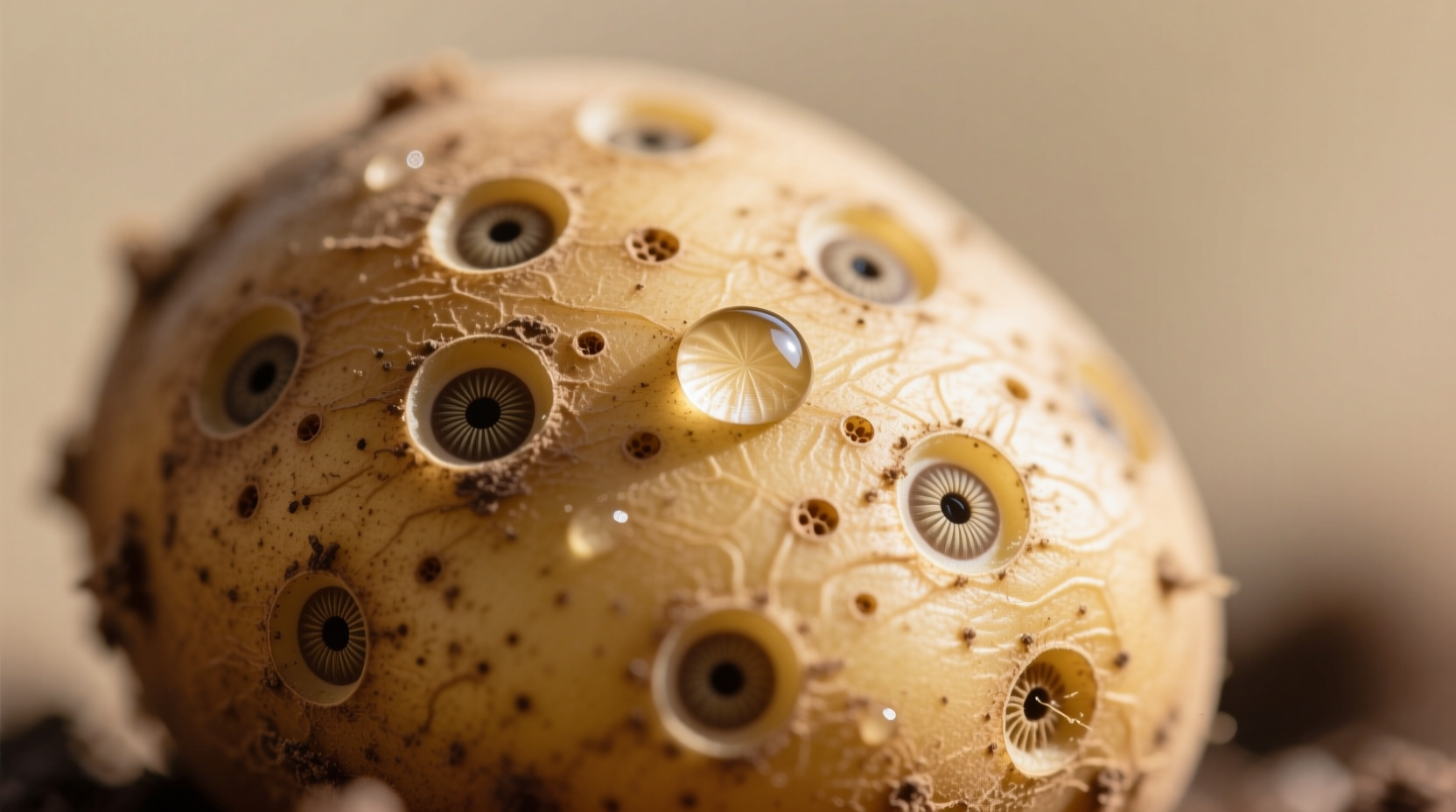Why Potatoes Confuse Even Experienced Gardeners
Many people mistakenly call potatoes “root vegetables” alongside carrots and beets. This common misconception stems from how potatoes grow—subterraneously like true roots. However, potatoes belong to a completely different botanical category. Understanding this difference prevents gardening mistakes and explains why potato cultivation requires unique techniques.
Botanical Breakdown: Tubers vs. True Roots
Plant scientists classify underground food storage structures into distinct categories. Potatoes fall under tubers, while carrots represent taproots. This isn't just academic jargon—the distinction affects how plants grow, store nutrients, and reproduce.
| Characteristic | True Roots (Carrots, Beets) | Potato Tubers |
|---|---|---|
| Botanical Origin | Modified root tissue | Swollen underground stem |
| Eyes/Buds | None | Multiple “eyes” (growth points) |
| Nutrient Storage | Carbohydrates in root tissue | Starch in parenchyma cells |
| Reproduction Method | Requires seeds | Vegetative propagation via eyes |
| Connection to Plant | Single root structure | Connected via stolons (underground stems) |
Why This Distinction Matters Practically
For home gardeners, confusing tubers with roots leads to cultivation errors. Potatoes require USDA-recommended hilling techniques that wouldn't apply to root vegetables. As Cornell University's College of Agriculture explains, “tubers develop from stolons that swell at their tips, while roots grow directly from the plant's base.” This structural difference affects watering needs, soil requirements, and harvesting timing.

Common Misconceptions in Culinary Contexts
Chefs often group potatoes with root vegetables due to similar culinary uses. However, this classification creates confusion when discussing storage properties or nutritional profiles. Unlike true roots, potatoes contain solanine (a natural toxin) that concentrates in greened areas—a characteristic of nightshade-family stems, not roots. The Oregon State University Extension Service confirms that “potatoes share more biological traits with tomatoes than with carrots.”
Gardening Implications You Should Know
Rotating crops becomes critical when growing potatoes precisely because they're tubers, not roots. Planting potatoes in the same location where other nightshades (tomatoes, peppers) grew risks disease transmission. The USDA National Agricultural Library documents how potato blight spreads more readily among related stem-structure plants than across root-vegetable families.
Historical Context: How the Confusion Started
Early European settlers in the Americas called potatoes “roots” because they resembled familiar root vegetables. This linguistic shortcut became entrenched despite botanical evidence to the contrary. Modern DNA analysis from the Royal Botanic Gardens, Kew confirms potatoes' stem origin through genetic markers distinguishing stem tissue from root tissue.
Practical Takeaways for Gardeners and Cooks
- When planting: Treat potatoes like stem plants—provide loose soil for stolon development
- When storing: Keep potatoes in dark, cool places (unlike many root vegetables)
- When cooking: Understand that potato starch behaves differently than root vegetable carbohydrates
- When harvesting: Dig carefully to avoid cutting stolons connecting multiple tubers
Related Botanical Clarifications
Other commonly misunderstood vegetables include:
- Yams: True roots (unlike American “sweet potatoes” which are storage roots)
- Ginger: Rhizome (horizontal underground stem)
- Onions: Bulbs (modified leaves)
Frequently Asked Questions
Are sweet potatoes roots or tubers?
Sweet potatoes are storage roots, making them true roots unlike potato tubers. They develop from root tissue rather than stem tissue, which explains their different growth patterns and nutrient storage mechanisms.
Can you grow potatoes from seed like other vegetables?
While potatoes produce seeds (in tomato-like fruits), commercial and home growers almost always propagate them vegetatively using “seed potatoes”—small tubers or tuber pieces with eyes. This preserves desirable traits that don't come true from seed.
Why do potatoes sprout eyes but carrots don't?
The “eyes” are actually stem nodes—growth points characteristic of stems, not roots. Carrots lack these because they're true roots without stem tissue. Each potato eye can develop into a new plant, demonstrating their stem origin.
Do all tubers contain solanine like potatoes?
No, solanine is specific to nightshade family plants (Solanaceae). While other tubers like yams or cassava have their own defense compounds, they don't produce solanine. This toxic compound forms in response to light exposure—a stem-plant adaptation.
How does the tuber vs root distinction affect nutritional content?
Tubers typically store more starch in parenchyma cells, while roots often contain different carbohydrate structures. Potatoes' stem origin contributes to their higher protein content compared to most root vegetables, and their vitamin C degrades faster during storage than root vegetable nutrients.











 浙公网安备
33010002000092号
浙公网安备
33010002000092号 浙B2-20120091-4
浙B2-20120091-4